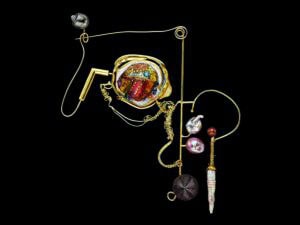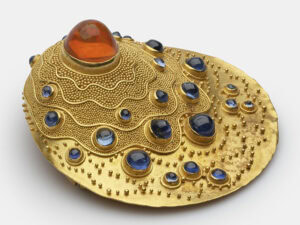
Céline Robin and Robert Mazlo, Sacrés Outils! Paris: Robert Mazlo Endowment Fund for Art and Contemporary Art Jewellery, 2022.
Sacrés Outils! is one of the most curious books I’ve ever held. It sketches out jewelry tools of the past and highlights contemporary makers who make tool-related work. Also, it holds a list of institutions that teach jewelry. And, lest I forget, a memoir of a goldsmith accompanied by watercolors. At 460 pages, it weighs over 4 ½ pounds (2.2 kg). This book is not meant to be read from cover to cover. Allow me to report on what I have read so far.

Full of love
Immediately I could tell buckets of love have been poured into this book. The design of the cover and endpapers alone are unique. They were designed by Robert Mazlo, the artist and gallery owner in Paris. The other author, Céline Robin, drew all 200 illustrations for the history chapters by hand. Referring to photos from museums and other collections, she selected the details that she needed. Her drawings give the pages a quiet, consistent impression. A bit nostalgic too, like art history books from before photography.
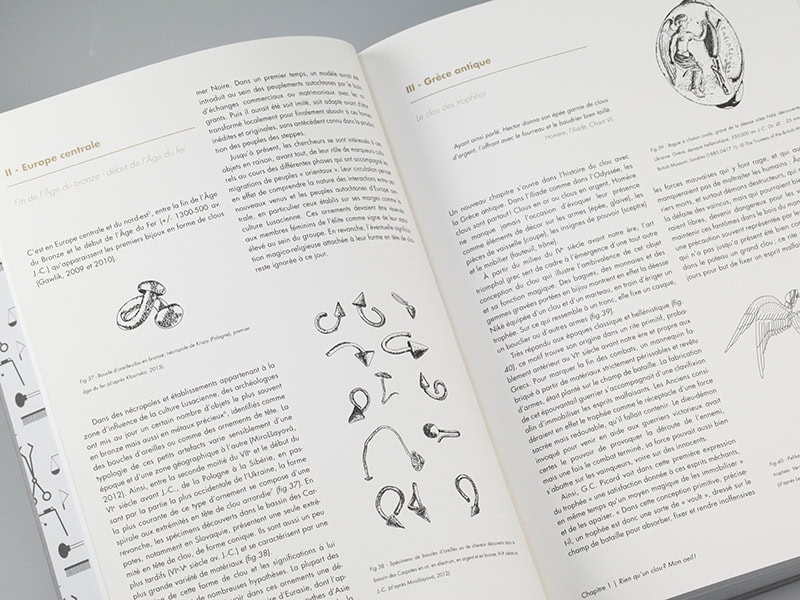
Obsessed with the technical side
“Sacrés outils” can be translated as “blessed tools.” Those who expect—with a book title like that—to find a history of only tools such as the faceting wheel or the guilloche machine are mistaken. The history section does describe tools relevant to jewelry but mentions techniques and inventions, too. Photography, for example, also becomes a “sacred tool.” Besides that, lots of archetypes made possible with the introduction of various techniques are presented in detail: pilgrim’s badges, pomanders, chatelaines, and something intriguing called “miner’s brooches.” The definition of the tool is stretched wide.
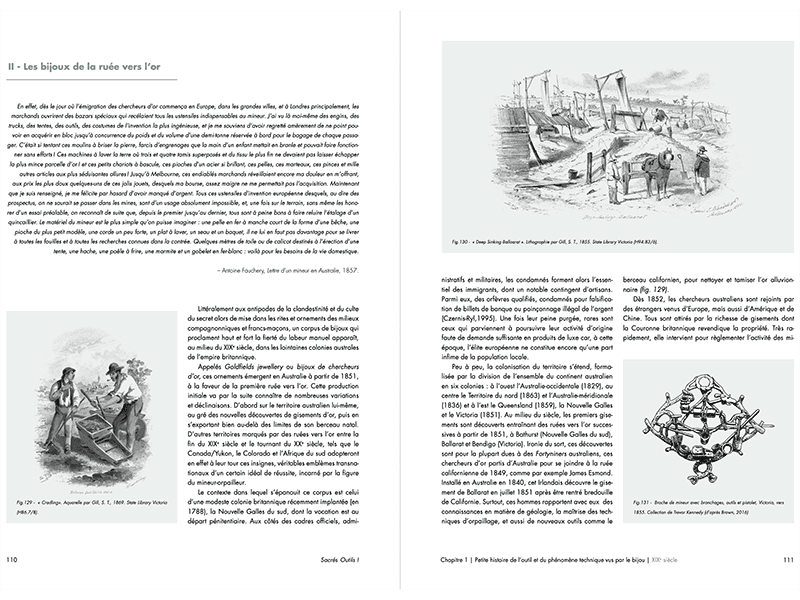
This part of the book was meant to find something out. Robin noticed among contemporary makers a certain obsession with the technical aspects of jewelry. She wondered whether this is a modern phenomenon or if it has older roots. Therefore, intaglios get a place in the book—for the skill of engraving, of course, but also when they depict a scythe, for example. The journey through lots of things having to do with material culture says something about how tools were viewed in the past. The tone is academic, and references to an impressive bibliography sprinkle the pages.
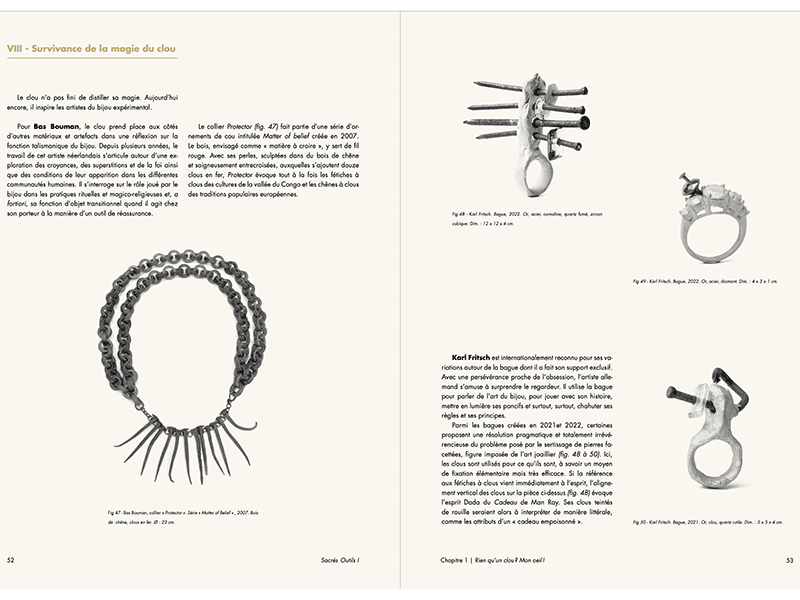
Although the eras are presented chronologically, common threads in history are demonstrated. The story of “the nail,” for example, takes us from the Sumerians to Karl Fritsch, Bas Bouman, and Bernhard Schobinger.
Artists and tools
The largest section in Sacrés Outils! presents 23 contemporary makers from different countries. Some of them, such as Jo Pond, Gabi Feit, and Lisa & Scott Cylinder, have exhibited in the LA Joaillerie by Mazlo gallery. The artists are grouped around three well thought-out essays with different angles on the role tools play. Roughly summarized: they either reevaluate craft, place making as a subject of the piece, or depart from the tool as a leading factor in making. Every artist is portrayed with a two-page introduction and beautiful photos of their work.
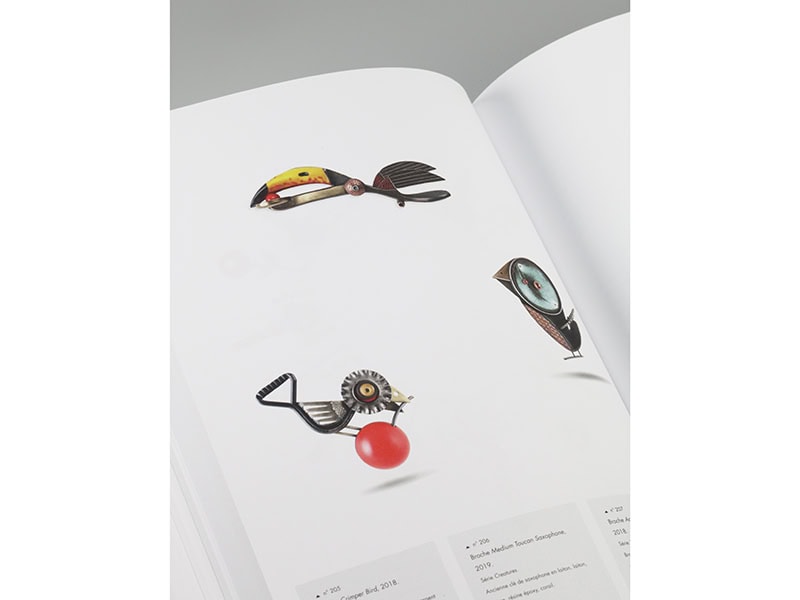
The featured artists get to answer the good old “what’s your favorite tool?” question, which never fails to captivate me. Their actual hammers, pliers, and saws are shown. Karin Herwegh mentions the Exacto knife, which she uses to sculpt wood, and Peter Machata says for him CAD/CAM-software is just like any other tool.

Sigurd Bronger’s signature tool is a set of taps and dies to make the nuts and bolts as small as 1 to 10 mm that hold his objects together. This Norwegian artist just had a major retrospective at the Neue Sammlung, in Munich. There the message was that Bronger’s pieces are not jewelry, but wearables (Trag-objekte) that generate renewed attention for things by lifting them out of the ordinary. In Sacrés Outils!, Robin sees Bronger’s work as questioning wearability. Wanting to make a “carrying device” for often quite fragile objects places him in the tradition of absurdism. (Robin elaborates on how that came about in her interview-essay in the recent monograph that accompanies the exhibition.)

Il Maestro
Sacrés Outils! has been published by the Robert Mazlo Endowment Fund for Art and Contemporary Art Jewellery in Paris. The book includes what seems like a fairytale by Robert Mazlo. This story, in Chapter 5: Il Maestro, pays tribute to the goldsmithing professore back in Italy who made young Mazlo muddle along for a higher purpose. The moral of the story is not so much about tools or technique as it is about investing hours and hours into perfecting one’s skills. Although it’s fascinating, including the genesis story of this artist is a bit much in such an overflowing book. It brings to mind another skill, that of the self-limitation with which masters or writers first reveal themselves.
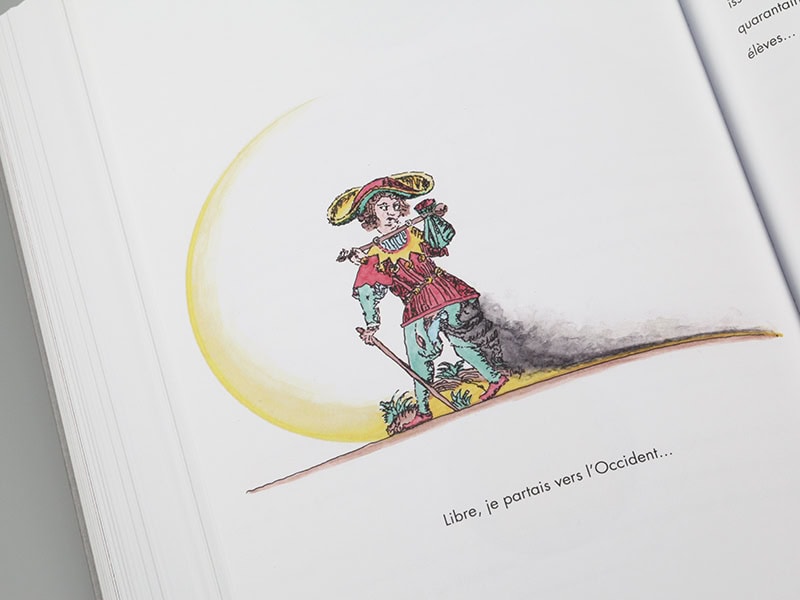
Fresh and French … but without French artists
It is refreshing to see jewelry books appear from unexpected corners, although I have to admit that I have little insight into what is actually published in the French language. When asked, Robin kindly explained that she and Mazlo worry that knowledge about contemporary jewelry in France is poor. Especially among students.

With their tome in front of me on the table, I am afraid there might be two reasons why it will fail to fill that gap. First, I wonder if such an overwhelming book makes the ideal first introduction to the field. But for those with prior knowledge, it is a wonderful resource.
Secondly, young French readers will not find any makers to represent them. Not one of the 23 artists featured in chapters 2, 3, and 4 is based in France. Yet in an article she wrote about art jewelry for the French magazine Ateliers d’Art [link to AJF library], Robin illustrates the text with the work of some French makers. In this book, however, there is no sign of Sébastien Carré nor Claire Wolfstirn, nor of Marie Masson, whose work was part of a group exhibition in the Galerie LA Joaillerie par Mazlo. Perhaps Robin did not feel their jewelry dovetailed with the topic of tools. Monika Brugger, though German, has lived in France for more than 35 years. Wouldn’t the references to sewing equipment in her work make her a perfect candidate to include in the book? And wouldn’t the forged-iron, nail-like teeth in Sophie Hanagarth’s trap bracelets have fit in the story of the nail? The Swiss-born Hanagarth, who lives in France, has been teaching all her life. In Paris and Strasbourg, she has taught the likes of Marion Delarue and Sébastien Carré over the years. Would no one at all fit the book’s theme … ?

Which makes me wonder, who is the intended reader anyway? An image of a piece by Holland Houdek annotated with explanations of six techniques used in its fabrication, that makes me think of a textbook. And for whom is the list of jewelry galleries, platforms, and schools—for would-be students? Sacrés Outils! is at once a coffee table book, essay, manual, and directory, summarized Robin when asked. The book was meant to be an “editorial UFO.” I love her way of putting it! The Robert Mazlo Endowment Fund produced the book in-house and had the freedom to put three, four books in one and write for numerous potential audiences. Arnoldsche’s book about Pforzheim’s Johannes Reuchlin, Die Mysterien der Zeichen, does something similar, combining in it letters as artistic visual element, writing, and jewelry. But not many publishers would go with a concept as widely ranging as Sacrés Outils!.
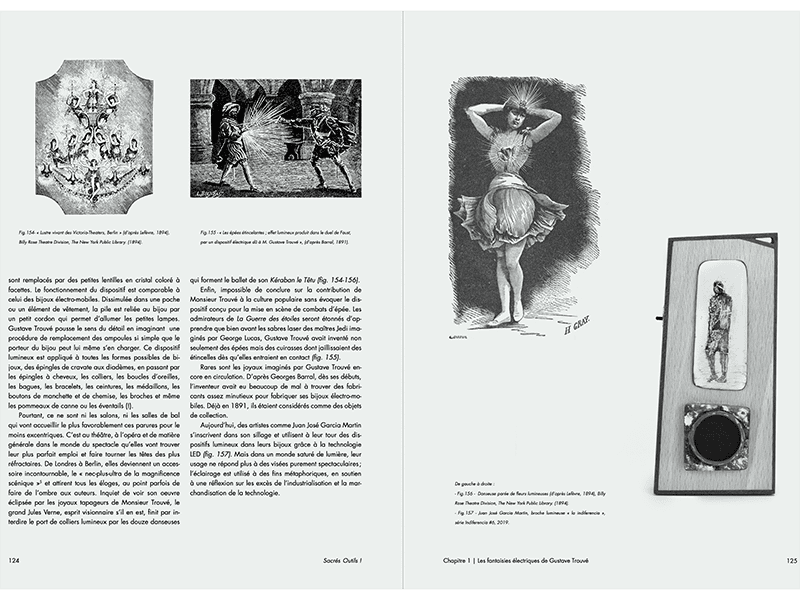
A cornucopia of 2.2 kilograms
Sacrés Outils! gives the French jewelry library an impressive amount of jewelry history and outstanding essays on tools and techniques that have shaped makers and thus contemporary jewelry. It includes an interesting range of makers (too bad none of them is French). These chapters, each rich in content, to my mind, would have been more approachable as separate volumes. Nevertheless, non-French speakers, place the book on a solid surface, take your phone out for the camera translation tool, and dive in.

Reviews are the opinions of the authors alone, and do not necessarily express those of AJF.
We welcome your comments on our publishing, and will publish letters that engage with our articles in a thoughtful and polite manner. Please submit letters to the editor electronically; do so here.
© 2024 Art Jewelry Forum. All rights reserved. Content may not be reproduced in whole or in part without permission. For reprint permission, contact info (at) artjewelryforum (dot) org

